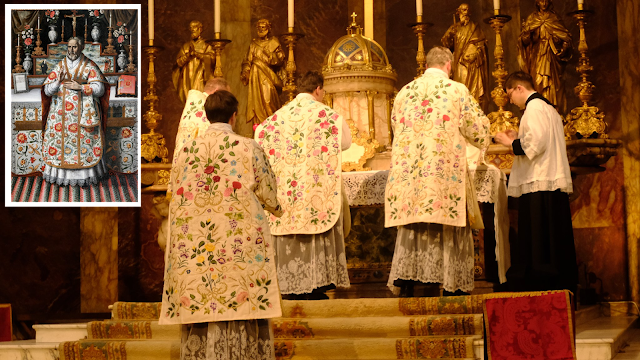For those of a more 'continental' background (and not just continental, but also Latino, Asian, etc.) these are perfectly natural expressions of the beauty of the natural world embedded into liturgical art. They frequently are used for Marian feasts and for Easter; in the former regard, the symbolism of the flowers tying to the many Marian floral symbols of course, and in the case of Easter, representing both the time of the year in which it arises (spring) and also symbolizing joy and new life.
In reality there is a long tradition of the use of such elements in vestment design so it really is curious that a vocal minority have chosen to single out floriated vestments for their particular disdain, particularly since the use of imagery from the natural world are quite common in the textile tradition in general.
At any rate, that little commentary aside, I always enjoy sharing depictions of vestments in art as they serve to inform us of history and are also good case studies for those making or commissioning new vestment work today. Recently I came across a variety of painted works taken from various sources which show some of these floral vestments with them. First however, let's look at the 'real thing' to give a reference point for what we are speaking about and looking at. Floriated vestments can come in one of two forms.
The first are those which are fully embroidered:
The second are those which come in the form of floral lampas fabrics such as these:

















